Electric VW Transporter comes in three performance levels
The successor to the T6.1, for which production in Hanover ended this year, is no longer an in-house development by VWCV, but a cooperation with Ford Pro. As reported, the Volkswagen Transporter will share the technology with the Ford Transit Custom and its electric offshoot E-Transit Custom and, like the latter, will be produced in Kocaeli, Turkey.
The new model will come in three Transporter variants (Kombi, panel van and dropsite) and as a Caravelle (passenger transport) and will be offered either with a combustion engine, as a plug-in hybrid or battery-electric. In an earlier announcement, the electrically powered models were simply referred to as e-Transporter and e-Caravelle. The Kombi and panel vans are optionally available with a high roof and an extended wheelbase.
The manufacturer now revealed the first details about the BEV variants: there will be a choice of electric drives in three power levels with 100 kW, 160 kW and 210 kW, which will be combined with a 64 kWh battery (net). In addition, there will be an electric version with reduced power and a smaller battery for urban delivery traffic – VWCV has yet to reveal more. The electric motor drives the rear axle, and an all-wheel drive version is planned “at a later date,” according to VWCV. No further details are available here either.
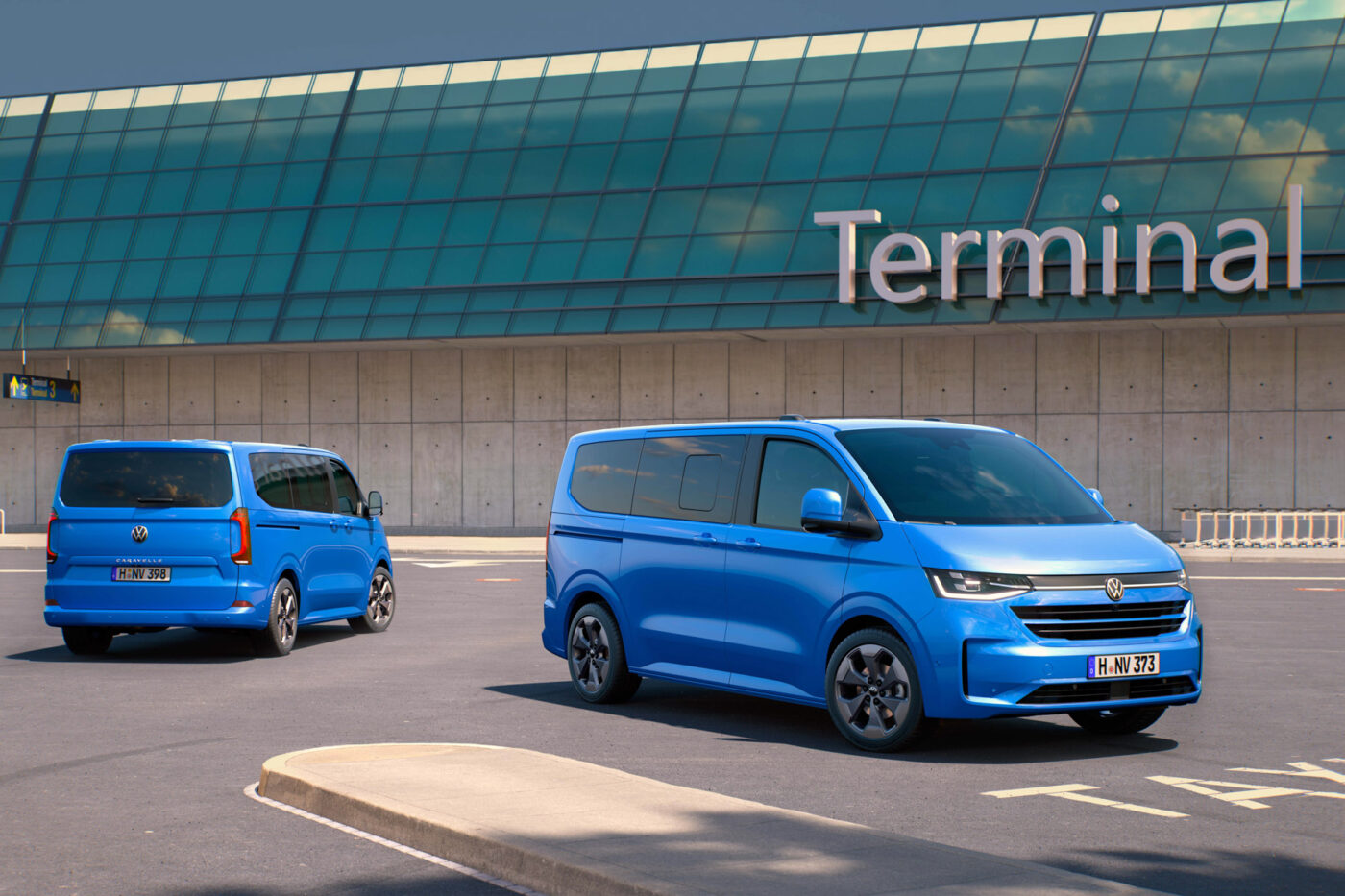
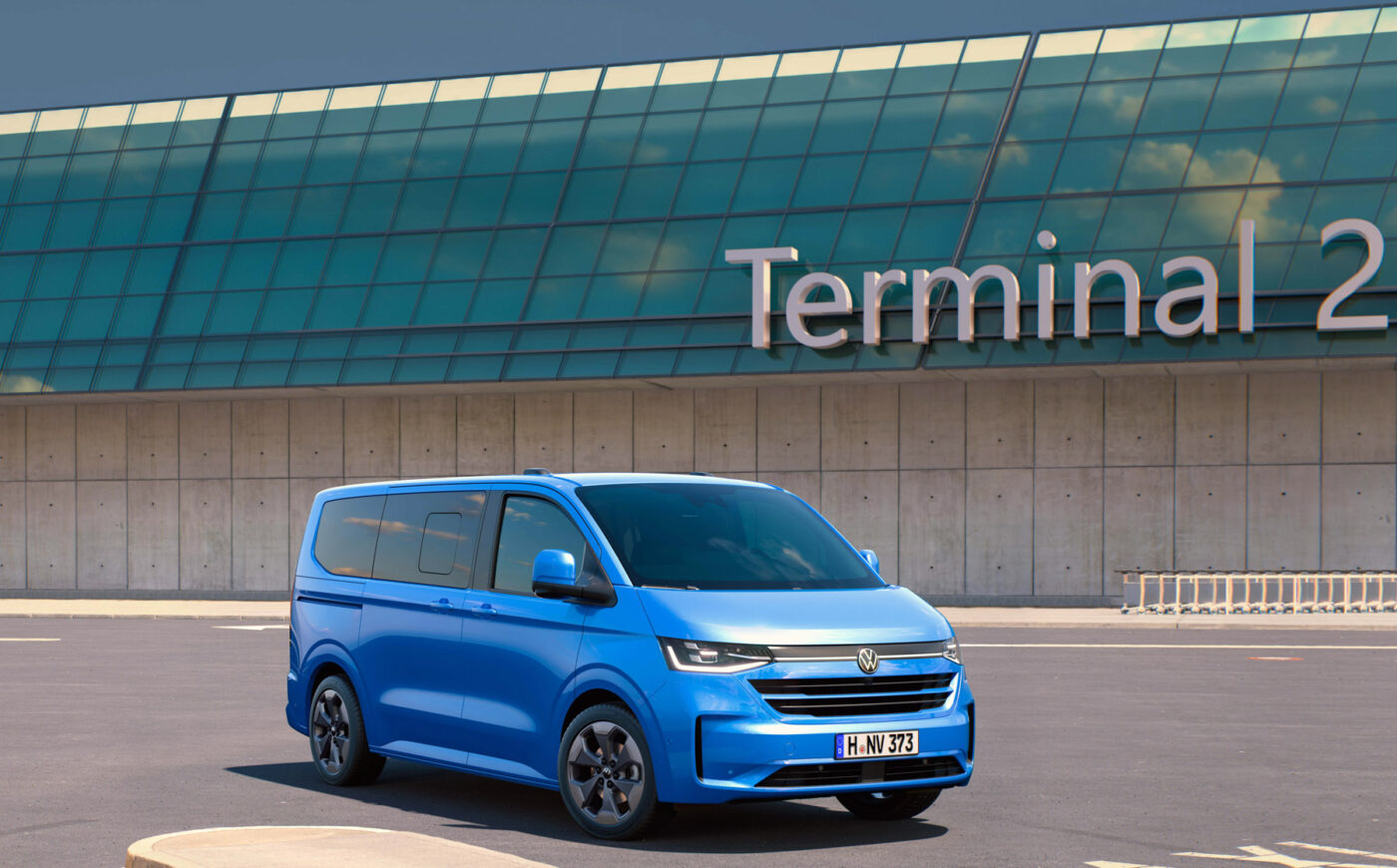
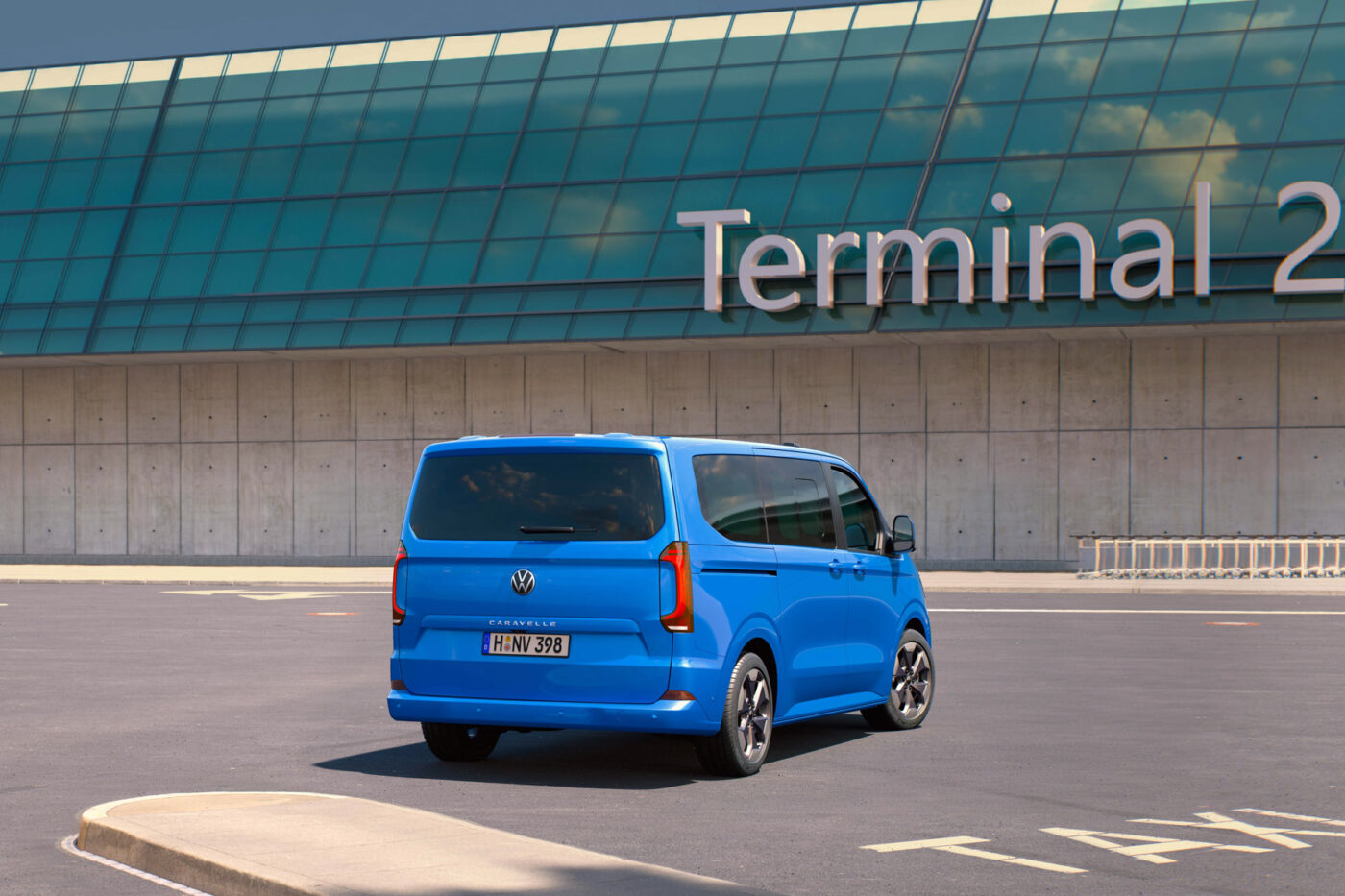
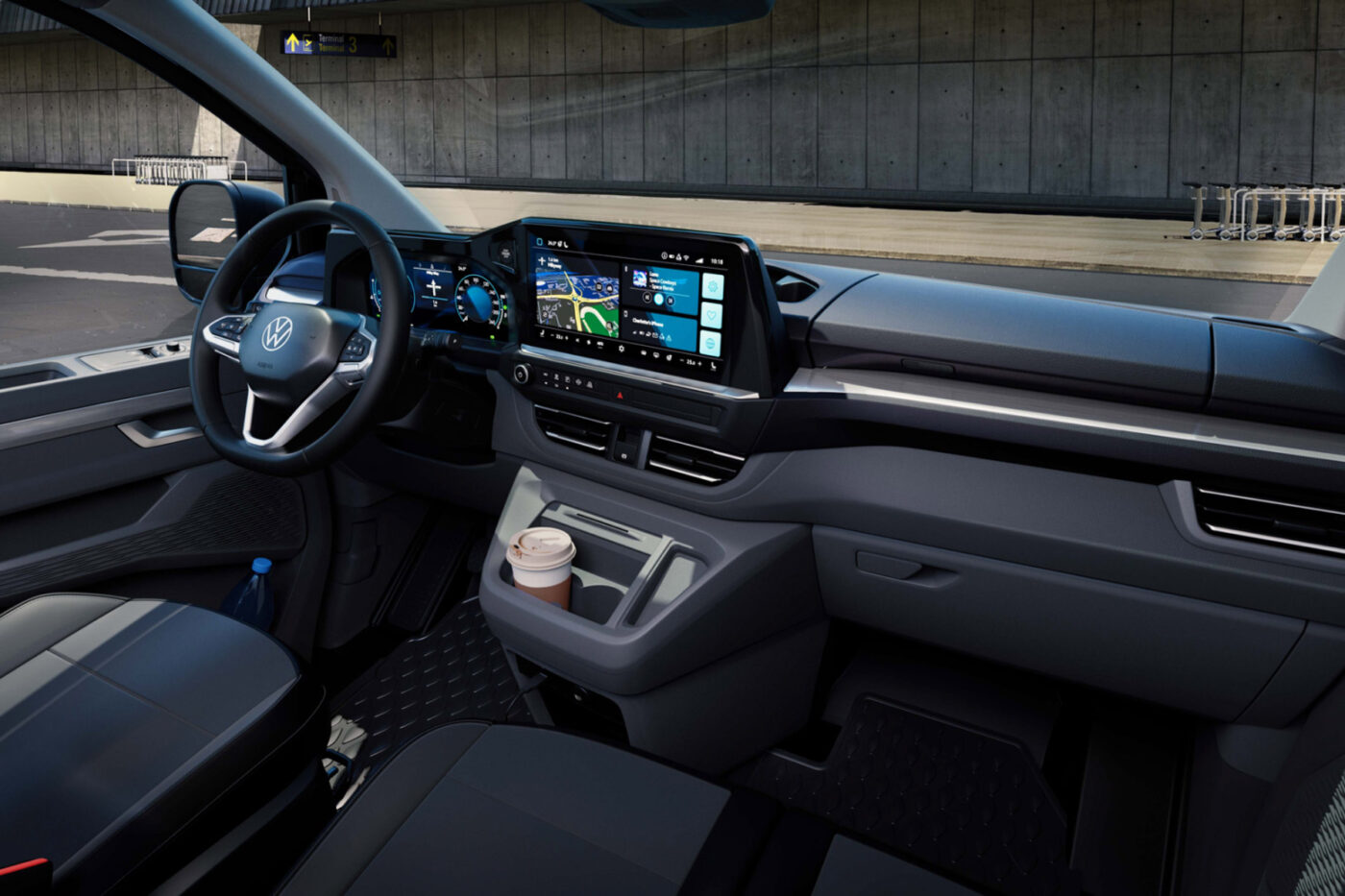
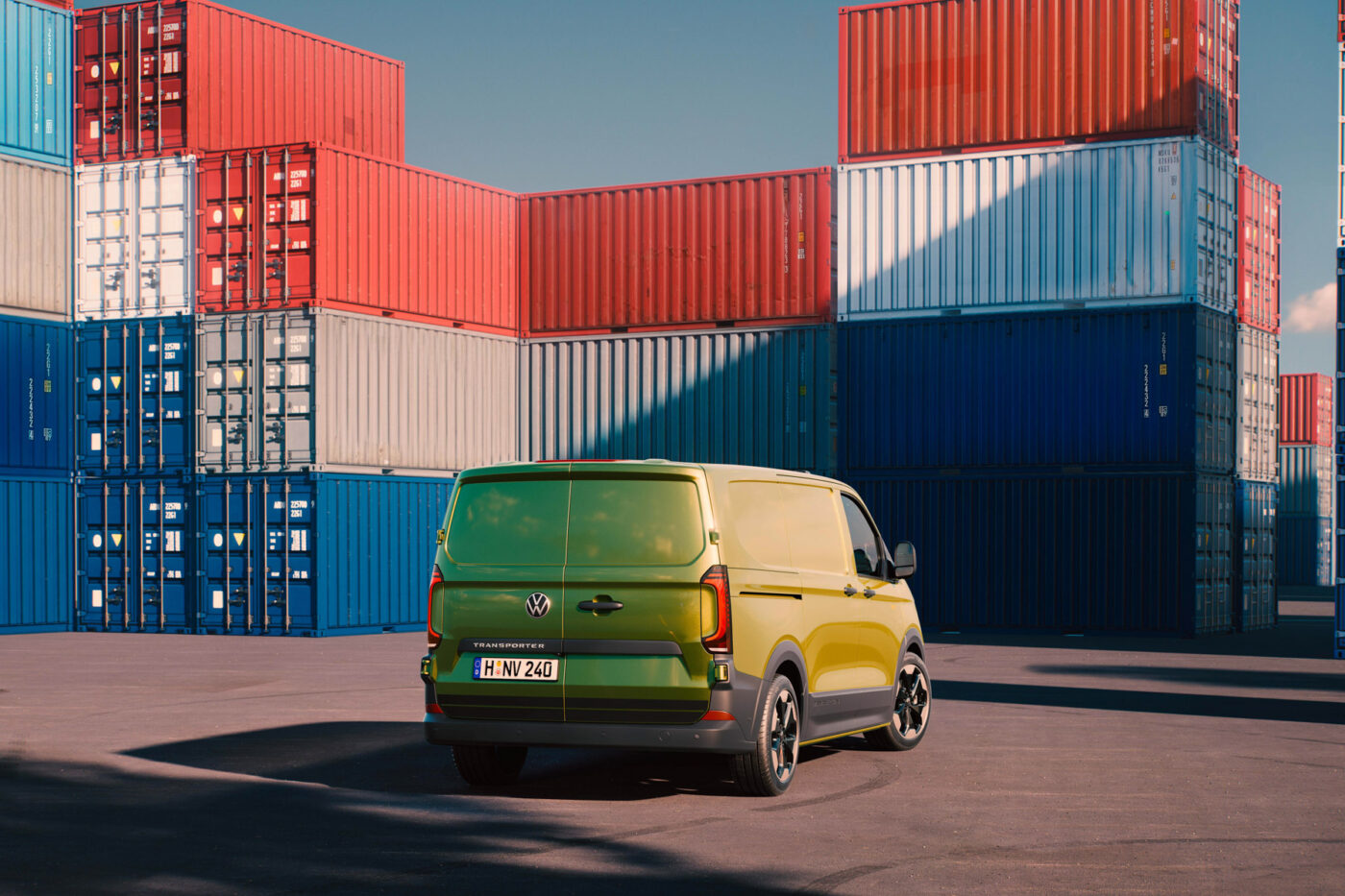
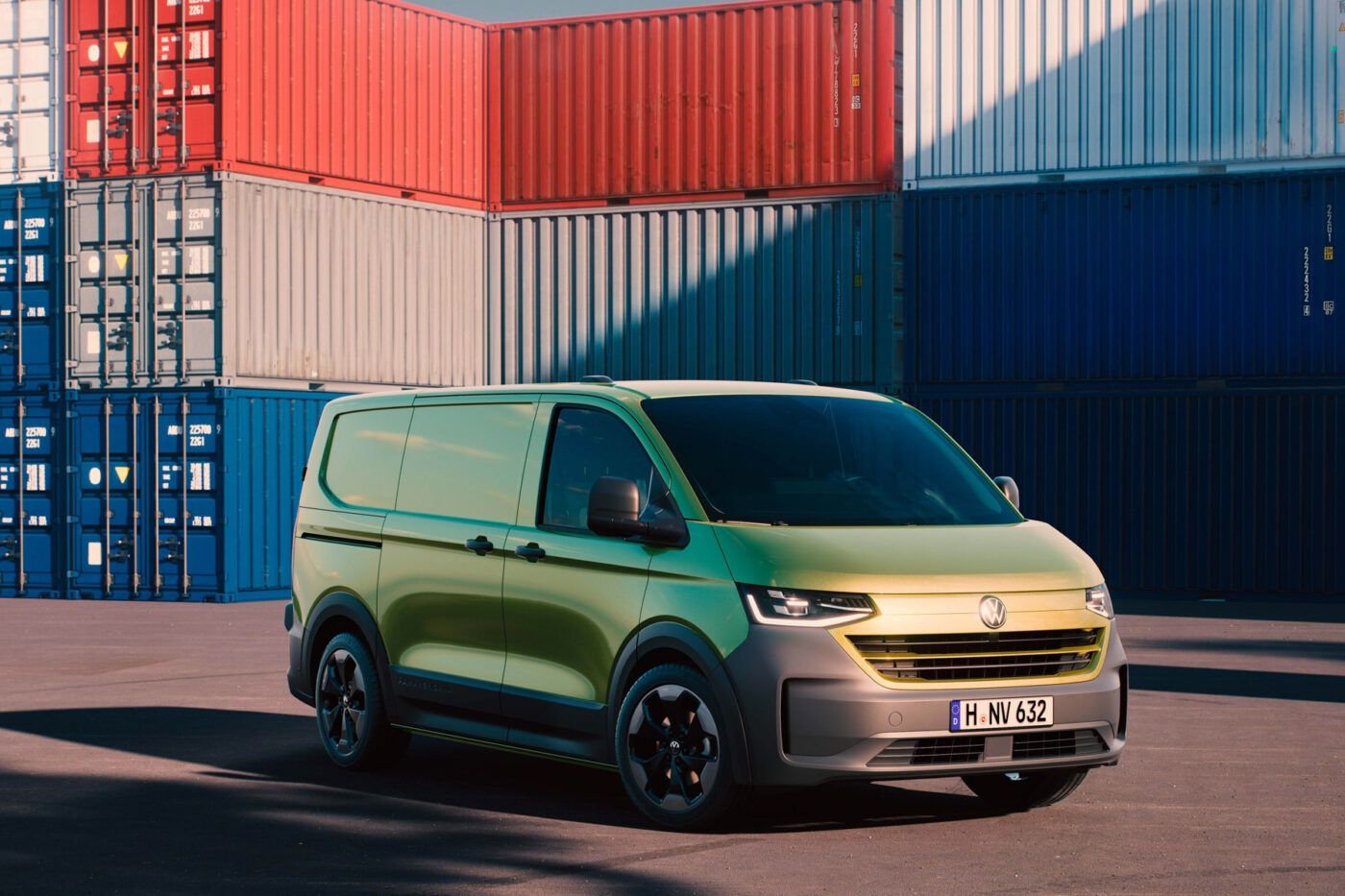
The information on the battery and electric drives is somewhat surprising. Ford has only announced the 100 and 160 kW power levels for its electric transporter model, so the 210 kW version is new. However, Ford uses a 74 kWh battery, i.e. ten kilowatt-hours more than VW. The Ford E-Transit Custom should be able to achieve a WLTP range of up to 380 km, so the VW e-Transporter will most likely fall slightly short of this figure. It should still be sufficient for most deliveries and handyman jobs. Customers will soon find out whether VWCV’s own claim of offering “innovative and versatile vehicles for professionals” can be fulfilled in all areas. The range is likely to be greatly reduced for applications with high payloads and towing capacity. VWCV only states a towing capacity of “up to 2.8 tons, depending on the variant” – no specific figure is given for the electric version. There is also no figure for the payload (up to 1.33 tons) for the e-Transporter
The new Transporter is 5.05 meters long (+14.6 cm compared to the T6.1), 2.03 meters wide (+12.8 cm) and has a wheelbase of 3.10 meters (+9.7 cm). A 40-cm longer wheelbase will also be available as an option, increasing the exterior length to 5.45 meters. The maximum width between the wheel arches increases by 14.8 cm to 1.39 meters, while the length of the load compartment floor is 2.60 meters (+6.1 cm). With the extended wheelbase, this is also 40 cm more, i.e. a full three meters. The largest stowage volume of the versions with a normal wheelbase is 5.8 cubic meters. With a long wheelbase and high roof, the volume increases to up to 9.0 cubic meters.
The new generation will also have numerous modern features in the interior. A ‘Digital Cockpit‘ with a twelve-inch display comes standard, for example, and the infotainment system with a 13-inch touchscreen (including DAB+, Apple CarPlay, Android Auto and online services) is also included. A multifunction steering wheel, keyless start system, rain sensor, Lane Assist lane departure warning system, Front Assist emergency braking system and traffic sign recognition are also fitted as standard.
There will also be “various interfaces” to supply electrical equipment with power. We are talking about USB-A, USB-C and 12-volt sockets. Connection options for 230-volt devices are also optional – for all drives. Only the electric version will have two additional sockets in the D-pillar area for an extra charge. Total output of the 230 V system: up to 2,300 watts. That means that there is a suitable power source for every electrical device – from laptops to circular saws.
With the premiere of the ID. Buzz, VWCV has moved away from the usual duo – Transporter and Caravelle for commercial customers, the Multivan for private customers. With the MEB van from Hanover, there is already an electric van for private customers and a cargo version for commercial customers. For customers who require a higher payload, the seventh generation now follows as an e-Transporter. And for private customers, VWCV already converted the T7 Multivan to the MQB platform some time ago. Following the summer break, the Hanover plant has also been running in solitary mode: In the meantime, the ID. Buzz and the T7 Multivan are each built on their own line. Until the beginning of July, three models, including the T6.1, were still running on two lines. As mentioned above, the new generation of vans is being built in Turkey.

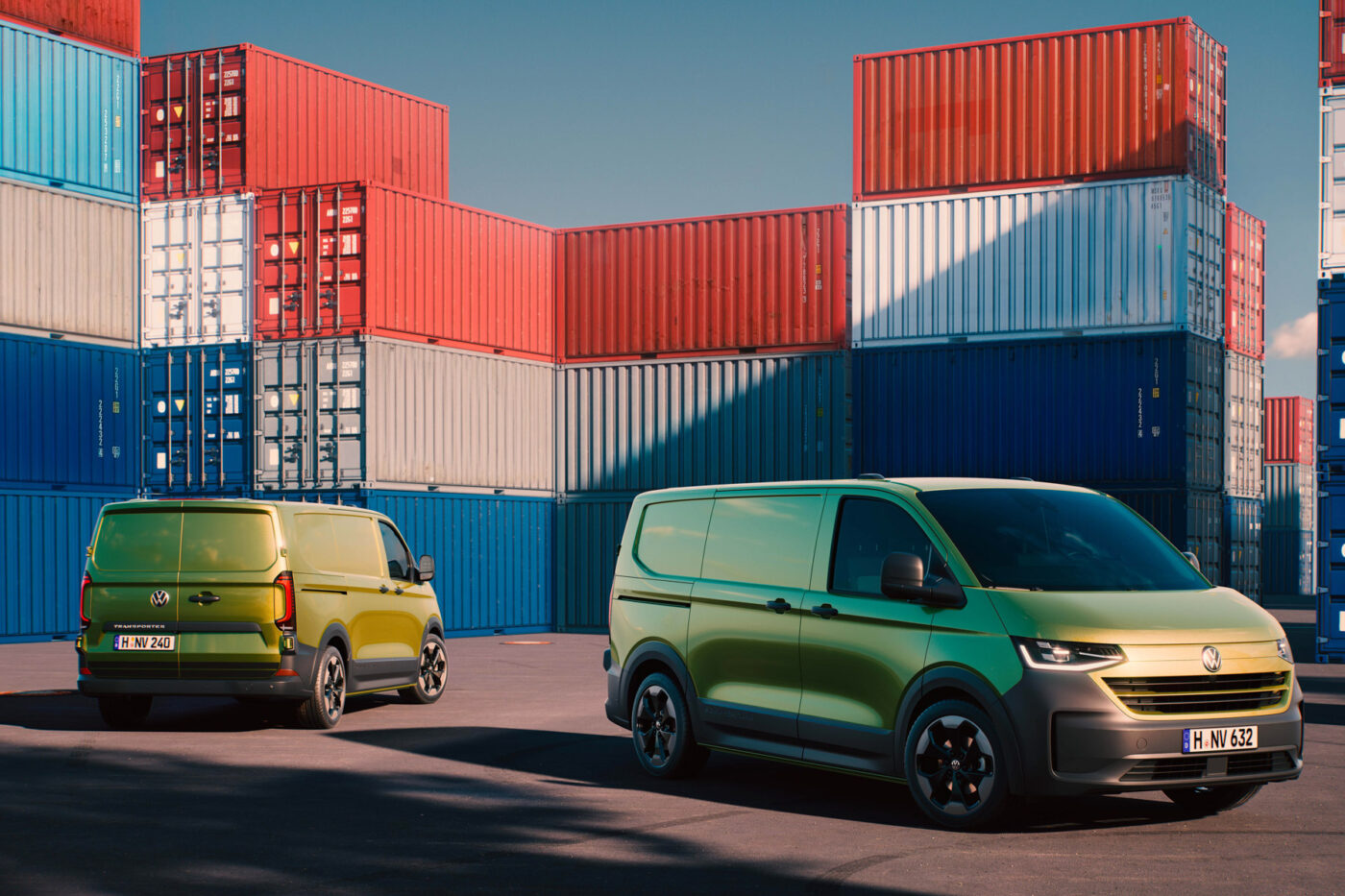
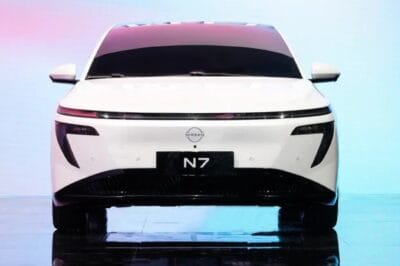

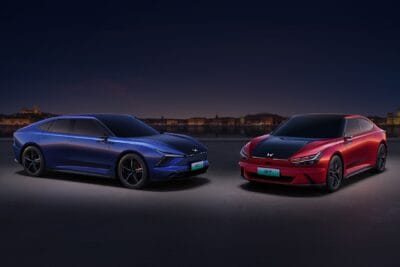
0 Comments